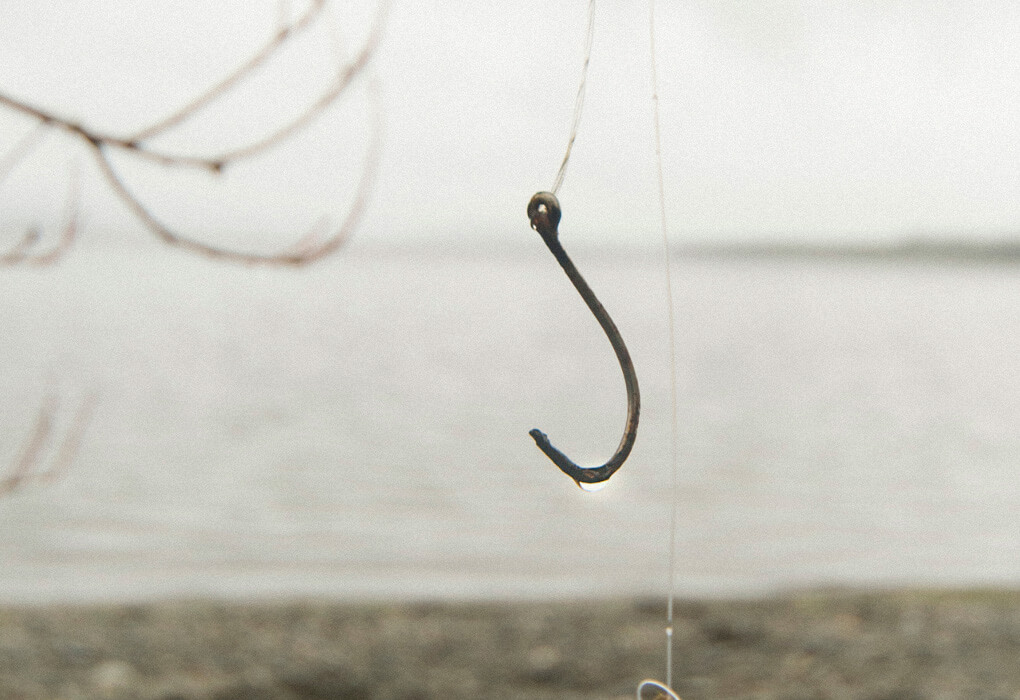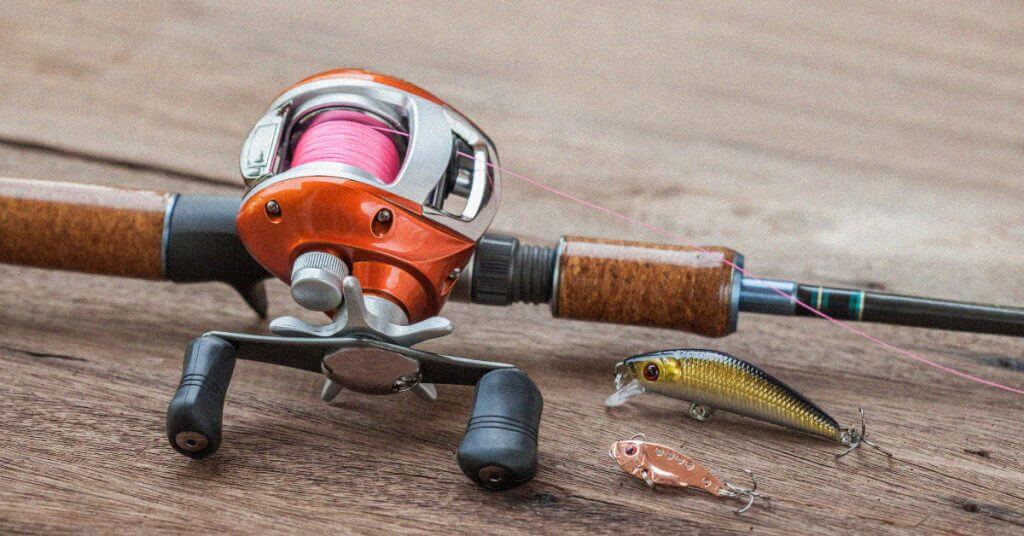Your casting reel and fishing line are the most vital parts of your bass fishing equipment to avoid minimal to no maintenance issues when using your fishing rod.
Now, typically, some prefer utilizing a spinning reel for their pole. However, we will discuss how to spool a baitcaster and our top 6 fishing tips to consider.
- Step by Step Guide To Spooling Your Baitcaster Reel
- What You’ll Need
- Step 1: Prep Your Baitcaster and Thread the Fishing Line
- Step 2: Wrap Your Fishing Line around the Reel Spool
- Step 3: Tie an Arbor Knot Around Your Spool
- Step 4: Maintain Tension With Your Fishing Line
- Step 5: Reeling Your Fishing Line
- Step 6: Tying Your Lure or Hook to the Fishing Line End
- Pros of Baitcasters
- 5 Things To Consider before Spooling a Baitcaster
- Overall Thoughts
Step by Step Guide To Spooling Your Baitcaster Reel
So now that we reviewed our top fishing tips when spooling your baitcaster, below, we will provide a step-by-step guide on how to complete this.
What You’ll Need
- Rod
- Reel
- Pencil
- Fishing Line (braided or monofilament backing)
- Weight to tie at the end of the line (hook or lure)
Step 1: Prep Your Baitcaster and Thread the Fishing Line
When first learning how to put line on a baitcaster, you must prepare your baitcaster by feeding the fishing line through the line guide, which will help the reel distribute the line evenly.
If you require more abrasion resistance and elasticity, acquiring a monofilament line might be the right fit for you. If you are unsure if your fishing rod came with a rod guide, review this for extra help.
Step 2: Wrap Your Fishing Line around the Reel Spool
Next, you’ll want to wrap your fishing line around the reel spool. Usually, most reels have holes for the spool to guide you in threading and produce a line twist to get it around the spool.
However, if your reel doesn’t have spool holes, you can feed the line directly into the reel by pushing a pencil through the center of it and holding it upright.
Ensure that the line comes off the spool straight. You may need an extra person to help you with this step.
Step 3: Tie an Arbor Knot Around Your Spool
Tie two overhand knots around the spool.
Generally, when tying a knot around the spool, the arbor knot is ideal, but the goal is for the line to spool evenly, so make sure that the knots are tight but not too tight that it will become uneven.
Step 4: Maintain Tension With Your Fishing Line
You will have to pinch the line in front of the reel to maintain tension to prevent loose loops.
Now, if you’re spooling braided line, you won’t have much of an issue, but using a monofilament or fluorocarbon fishing line might stretch out as you apply tension.
Step 5: Reeling Your Fishing Line
While still maintaining tension with your fishing line, reel it in at least ⅛” between your fishing line and the edge of the spool lip.
It’s important to evenly spool your line on your casting wheel to avoid hitting the frame and damaging it. Then, you would have to spool a new line.

Step 6: Tying Your Lure or Hook to the Fishing Line End
Tie a lure or hook to the fishing line end to maintain tension, preventing the fishing line from going back inside the fishing reel.
Pros of Baitcasters
If you are a beginner angler, a baitcaster is a type of fishing rod with a reel seating on the top of the spool and can improve the angler’s control when casting if the fish is aggressive when caught.
Another advantage to utilizing a baitcaster rod is its versatile functions of both casting and baiting the fishing line.
Doing this also can give the angler a firm grip to avoid slippage and a greater casting distance.

5 Things To Consider before Spooling a Baitcaster
Before putting line on a baitcaster, you must consider the factors to avoid making a mistake, which will help to prevent issues when handling fish.
Spooling a Spinning Reel vs. Spooling a Baitcaster Reel
For this, the usual practice is spooling a spinning reel, but some spool a baitcaster reel. Now even though both have the same purpose, both reels differ from each other in some factors.
For instance, when learning how to spool a baitcasting reel, you must feed the fishing line through the line guide.
Whereas if you are to spool a spinning reel, you must ensure that the fishing line is on the right side of the bail.
Tying your Knot and Maintaining Tension
Two essential practices in handling your fish are tying your knot and maintaining tension. One of the most common types of knots anglers usually implement is the arbor knot.
Though, of course, there are other kinds of knots to utilize. You must always maintain tension to prevent issues such as loose spool loops, inconsistent casts, and your spool reel unraveling.
Monofilament or Braided Line: Which is Better?
Choosing the type of line you want to use is important. Another factor to consider is that it’s recommended to back your line when spooling a baitcaster.
Your line options are monofilament, fluorocarbon, and braid.
However, monofilament and braided line on baitcasters are reasonably popular in use, aside from a fluorocarbon line.
A monofilament backing line provides a smoother, even the main line spool layer.
A baitcaster with braided line is beneficial as it allows for greater casting distance, but it does create tangles, backlashes, and line twists.
Adjusting your Baitcaster Reel
After spooling your baitcaster reel, hold your fishing rod upwards and leave a foot of line hanging down the lure. Then, maintain tension by tightening the spool knob and pushing the thumb bar.
Once holding the spool of line, loosen its tension so the lure lands on the ground in three seconds. Doing this is also essential when avoiding backlashes, line twists, and tangles.
Your Fishing Reel’s Gear Ratio
Whether you are a beginner or an experienced angler, keeping track of your gear ratio is also essential—one of the reasons is that it’s the speed that reels in the line.
However, considering this is not as necessary as previously mentioned, this would be a recommended factor when spooling a baitcaster.
Overall Thoughts
Sometimes, figuring out how to spool a baitcaster can be challenging.
There are many factors to consider, from selecting a fishing line to avoiding issues such as backlashing, line twists, slippage, and more.
We hope you enjoyed this article and can use these tips on your upcoming fishing trips!





